Muskrats (Ondatra zibethicus) are probably the cutest rodents out there – barely getting up to five pounds, these semi aquatic creatures are closely related to rats, mice, voles, gerbils, hamsters, and other rodents. Did you know that they are native to North America, and have only ever been introduced in other places around the world?
#1: Baby Muskrats are Called Kits!
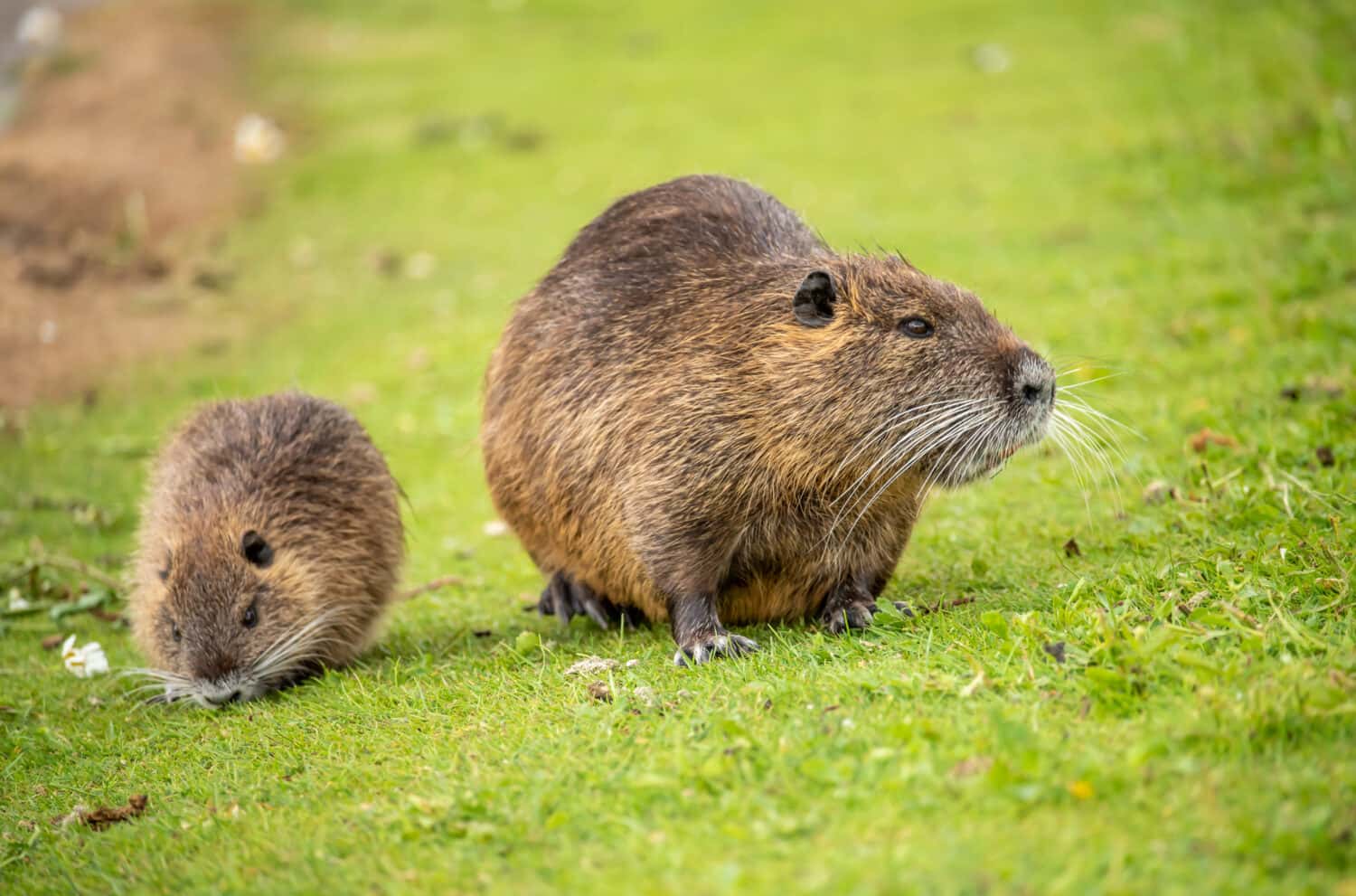
A baby muskrat is called a kit.
©Blende8/Shutterstock.com
Muskrats are called kits when they’re young. Typically, female muskrats have one to four litters with anywhere from one to fourteen kits per litter. Although, they average somewhere between six and seven kits per litter. Female muskrats have a quick gestation period, usually lasting about 28 days.
#2: Baby Muskrats Mature Quickly
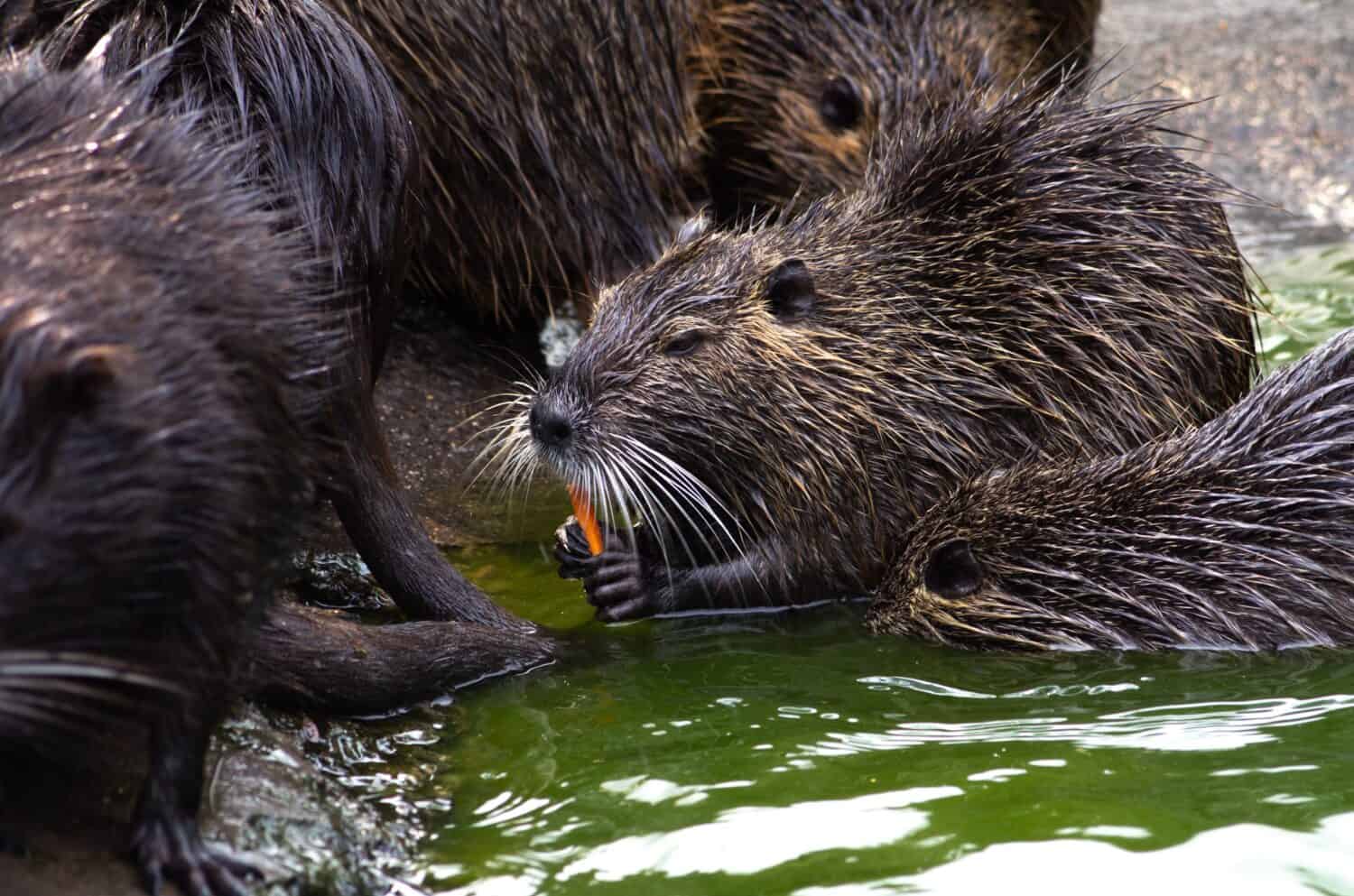
Muskrats are considered mature once they turn one year old.
©QINQIE99/Shutterstock.com
When a baby muskrat, or a kit, is born, they are blind, pink, hairless, and have small, round tails. They typically weigh 22 grams at birth, or about 0.05 pounds. That’s about the same weight as four quarters! However, they mature extremely quickly. After about two weeks, they will open their eyes. For the first couple weeks of their lives, baby muskrats live off of milk. After three weeks, they’ll begin the weaning period as a vegetarian diet is introduced to them.
#3: Muskrats are (Almost) Vegetarians!
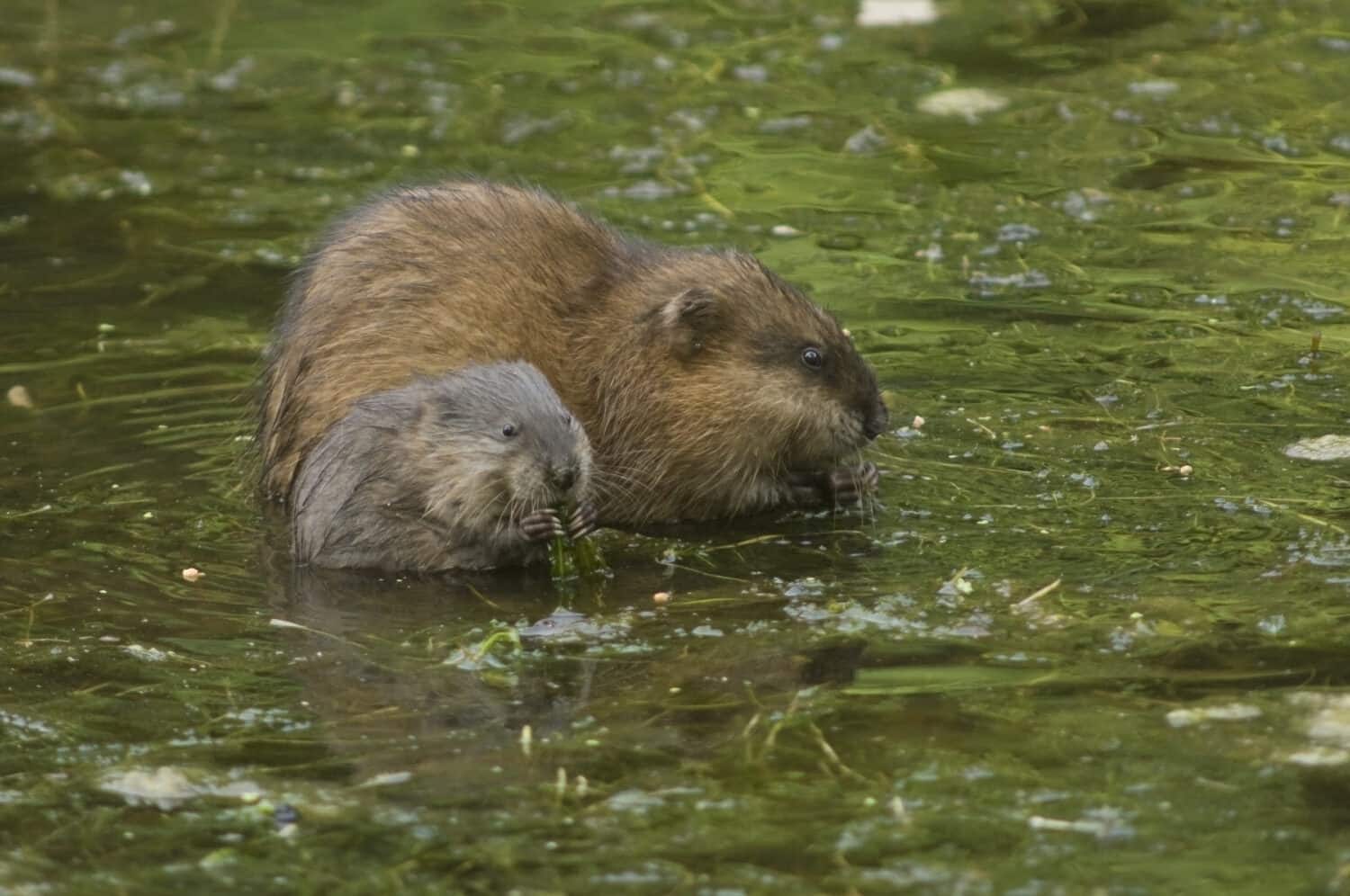
Muskrats are vegetarians when vegetation is more available in their habitats.
©Tony Campbell/Shutterstock.com
Muskrats have a pretty straightforward diet. They live off of aquatic leaves, stems, and plants found in their sub aquatic habitats. However, when there may not be enough vegetation within their habitat, muskrats will consume animal matter. It’s been found that muskrats will eat mollusks and fish when there may be a shortage in available vegetation. They will eat other invertebrate creatures as well, and have even been known to eat turtles.
#4: Muskrats are Native to North America
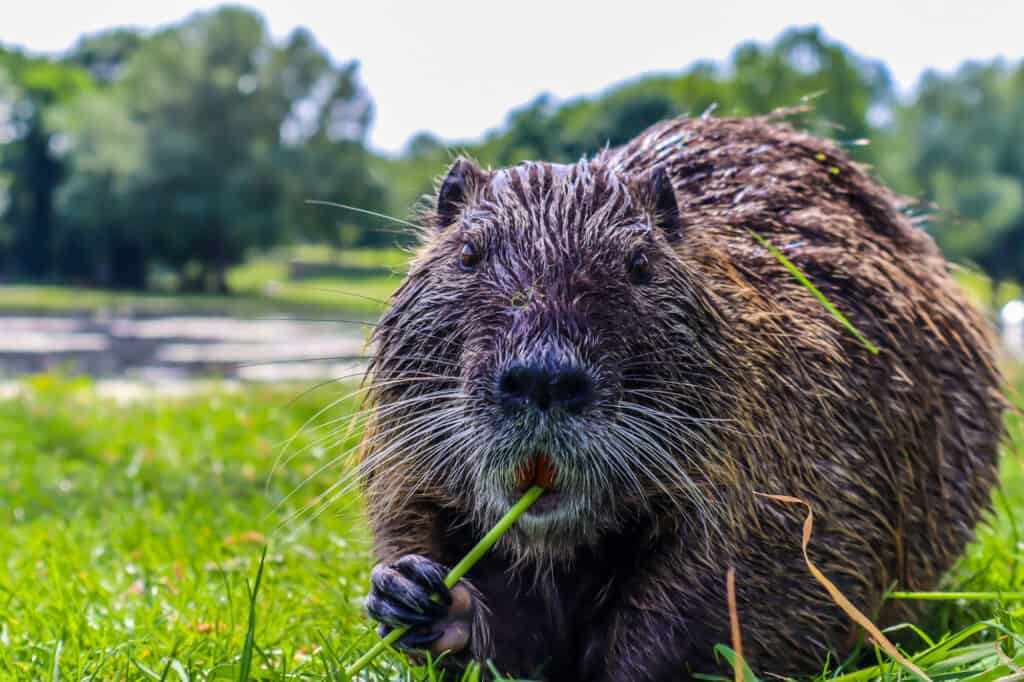
Muskrats are native to North America, however, they are now found all over the globe.
©iStock.com/w1d
While they can now be found in other places as an introduced species, muskrats are native to North America. They’ve been found all the way up in Canada, and their range extends down to the more northern parts of Mexico, close to the United States border. In other places around the world, they are an introduced species. Europe, Asia, and South America all have muskrats now. They were introduced initially in the 1900s to these places. Their fur is often sought out by the fur trade, and is even still sought after today. They have thick coats that are typically used for jackets and sweaters.
#5: Baby Muskrats are Social Creatures
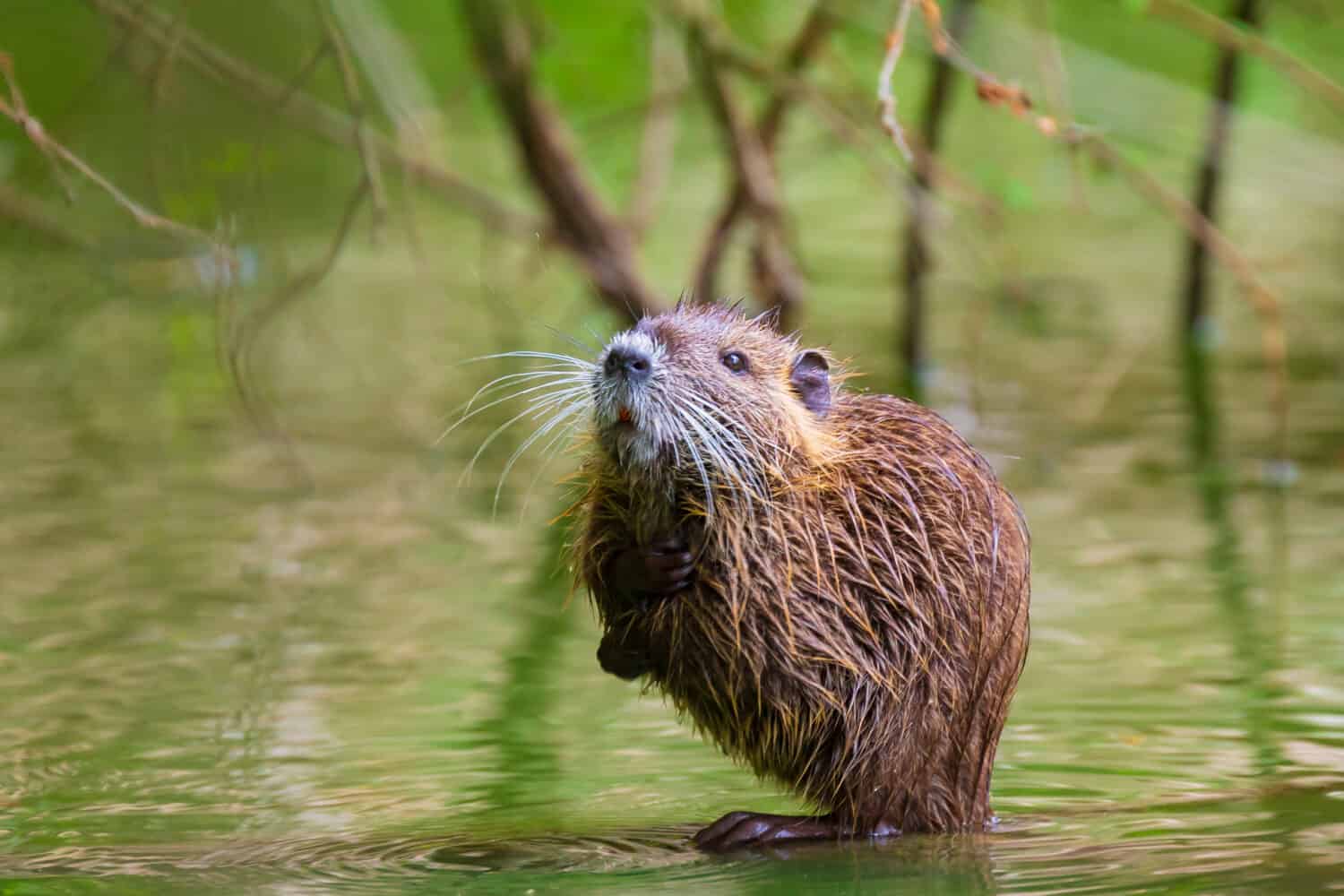
Muskrats are a social, yet territorial, rodent.
©SanderMeertinsPhotography/Shutterstock.com
These creatures are very social. Muskrats have the ability to communicate with one another and they also mark their territory with a bodily secretion they emit called musk. This serves as a warning to other muskrats and other creatures that they’ve marked the territory as their own. They also live in large families, with the typical family dynamic being a male, female, and their offspring. Female muskrats can have as many as 20 kits in a season!
#6: Baby Muskrats are Born in the Summer

Muskrats are semi aquatic creatures, and they start to swim about two weeks after being born.
©Doug Gordon/Shutterstock.com
The muskrat breeding season lasts from March through August. The first litter can be born anytime in this period, but it typically begins in May. Female muskrats can have multiple litters per year, up to twenty kits in a single breeding season!
The photo featured at the top of this post is © Blende8/Shutterstock.com
Thank you for reading! Have some feedback for us? Contact the AZ Animals editorial team.







